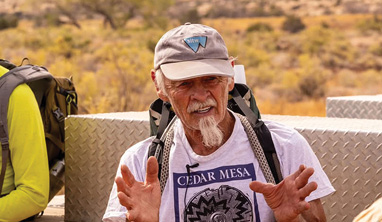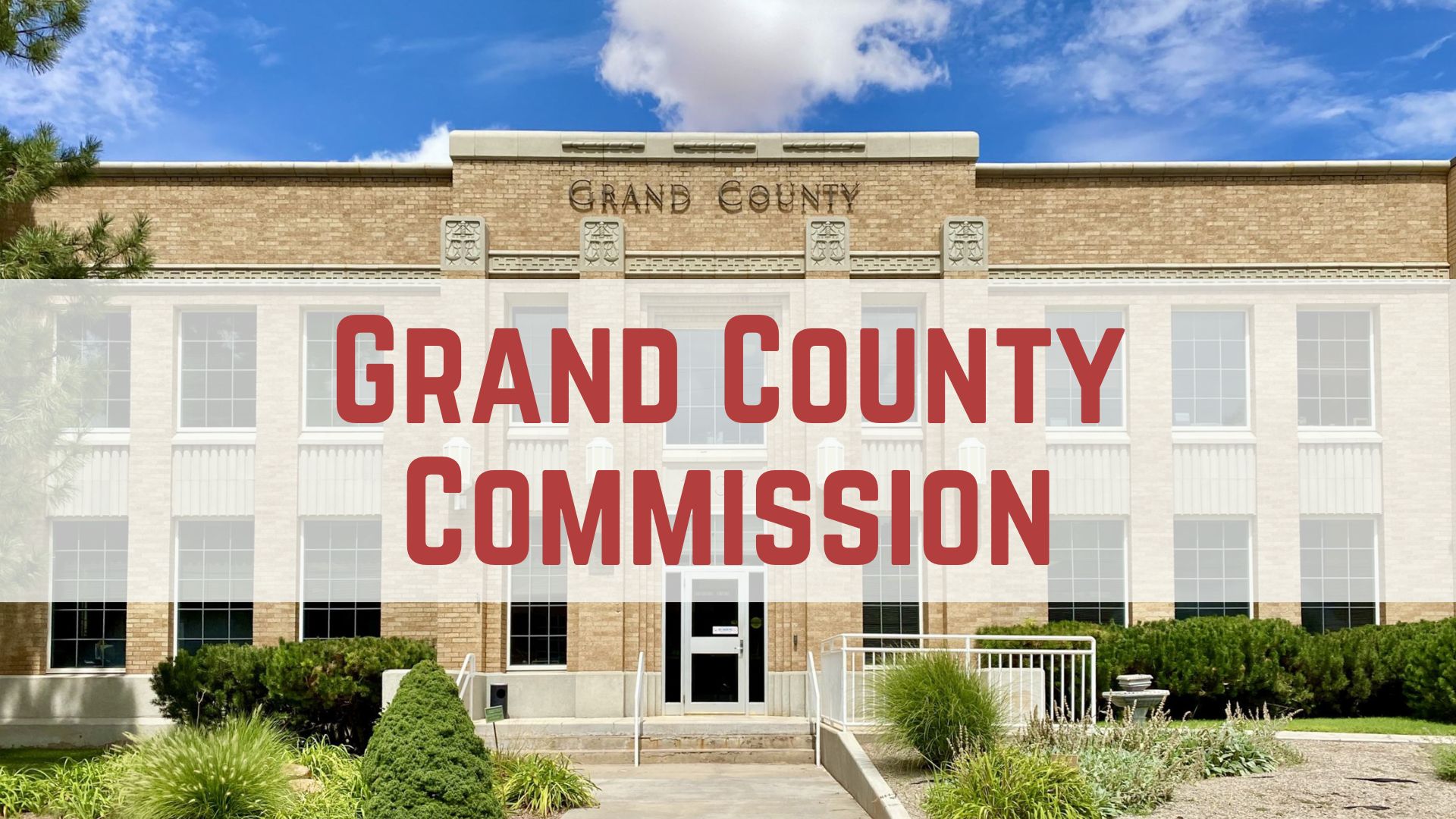Some information may be outdated.
The years-old controversy surrounding public access to a neighborhood pathway through the Grand Vu Park Subdivision could soon be winding down.
Attorneys for Grand County and two property owners announced last week that they are close to resolving a long-running legal dispute over ownership of the nonmotorized San Miguel Trail behind Cinema Court Apartments.
Seventh District Judge Lyle R. Anderson had been scheduled to preside over a related three-day bench trial on Wednesday, Feb. 7, through Friday, Feb. 9. But just 18 minutes after that trial was set to begin, plaintiffs’ attorney James L. Ahlstrom informed the judge that the two sides had reached an agreement to settle the matter.
“The property owners, for a variety of reasons, have determined that they would like to work with the county – that they no longer want to fight that issue in a court proceeding,” Ahlstrom said.
Defense attorney Philip C. Patterson said he hasn’t “really” envisioned the county’s intended route through the subdivision.
“But we’re simply not contesting that the trail can be brought across the Pack Creek drainage from its north bank to its south bank onto San Miguel, and then use San Miguel – as I would understand – as a nonmotorized trail right-of-way,” Patterson said.
Former Grand County Trail Mix chair Sandy Freethey, who has publicly supported the county’s plans for the trail in the past, said she’d like to see the two sides reach an agreement that makes everyone happy.
“If they can come to terms, it’s great,” she told the Moab Sun News.
As she sees it, the need for a connector trail between the Grand Vu neighborhood and the city limits is greater than ever, since the development of the nearby Valley View Subdivision and other homes in the area.
“The idea of a connection is still valid to me,” Freethey said.
A long and complicated history
An Eagle Scout built the trail and bridge behind Cinema Court in 2009, and until 2011, pedestrians and bicyclists used the route across Pack Creek as an alternative to heavily traveled roads in the neighborhood.
In 2011, though, a county-hired surveyor issued a disputed report which found that the Shuey family and Drew Roots owned two “waste parcels” on a narrow strip of land near the mouth of the trail. Based on that report, the property owners subsequently built a fence that cut off public access through the San Miguel cul-de-sac.
Roots previously told the Moab Sun News that he moved to the very end of the cul-de-sac for a reason, and he wanted a return to the peace and quiet he experienced before the trail was in place.
Over the years, he has said, he witnessed the accumulation of litter and dog excrement along the trail area in and around Pack Creek, as well as incidents of vandalism to his car. He also questioned the safety of the trail, telling the Moab Sun News in 2015 that he watched numerous children wipe out on their bikes along a hilly section near his home.
Grand County Attorney Andrew Fitzgerald has maintained that the developers of the Grand Vu Park Subdivision created public easements to potentially extend roads or other infrastructure in the future, noting that the waste parcels are the same width as San Miguel Street. Regardless of the surveyor’s conclusions, Fitzgerald previously told the Moab Sun News that the county must have access to a nearby property it acquired at a tax sale, which is only accessible via the disputed section of the trail.
Until last week, the question of who owned the waste parcels remained a point of contention between the two sides. The disagreements were so sharp that not even the Utah Office of the Property Rights Ombudsman could resolve them when it was asked three years ago to mediate the dispute.
“We were all younger then,” Patterson said, alluding to the lapse of time between then and now.
Needless to say, the ombudsman’s intervention ultimately failed.
“It was unsuccessful, because at that time, the parties were entrenched and (in opposition) about any trail under any circumstances coming onto San Miguel, because of this 18-foot, bow-tie-shaped piece of property,” Patterson said.
But now, Patterson said, the two sides have accomplished a “very substantial component” of a settlement agreement.
“Because Mrs. (Ginger) Shuey and Mr. Roots agree that the trail should traverse onto San Miguel (Street),” he told the court. “So obviously, they’re not disputing that the trail should traverse over this so-called waste parcel.”
Freethey said she empathizes with the property owners’ previously stated concerns about potential impacts from pedestrian and bicycle traffic along the pathway.
“I understand they want privacy and don’t want people standing (by) their houses,” Freethey said.
To minimize any impacts, she suggested that fencing, signage, shrubbery and other screening could be installed – suggestions that Trail Mix committee members first proposed years ago.
Mediation to continue in coming weeks
Ahlstrom said he had been prepared to tell the court as part of the plaintiffs’ opening arguments that they have “nothing but the utmost respect” for Shuey and Roots.
“And that if there ever was such a thing as a friendly lawsuit, that this was that – that there’s no animosity toward these individuals, but there was an effort and a need to be able to have (the judge) referee a good-faith (effort) that developed between the parties, as to the ownership of these waste parcels at the end of San Miguel (Street),” he said.
While the agreement nullified the scheduled bench trial, Ahlstrom said the two sides still need to work out the precise details of the settlement.
“The county’s willing to have that discussion,” he said. “The county’s willing to engage in mediation that would include a formal mediator as part of that process in case there (are) any wrinkles that need to be worked out that can’t be worked out between the parties.”
In the event that those good-faith efforts don’t succeed, though, county officials want a “backstop measure” in place. In particular, Ahlstrom said, the county wants to retain the ability to have a trial before Judge Anderson retires in July.
The judge ultimately scheduled a June 20 setting, although the plaintiffs’ attorney suggested there’s a strong likelihood that the trial will be vacated before then.
“(There) would be, from what we’re hearing today, a 95 percent chance or greater that you would never hear about this case again,” Ahlstrom said.
In a couple of weeks, he said, he would like both parties to put forward a formal settlement document that the court could then approve.
“We would anticipate that once the mitigation dialogue has been reached and finalized, it would come back to you at that point to strike the trial setting and to confirm that there have been mutual releases of the claims in favor of the settlement agreement,” he said.
Judge Anderson indicated that he is ready to put the case to rest before he retires, telling the attorneys that “this case is already really killing my (statistics).”
“Frankly, I came here prepared to tell you … that if we’re not careful, what will happen here is that even the winner will be a loser in this case, because it really is a very difficult case from the standpoint of trying to figure out what the law is, and there’s a potential for bouncing back and forth between this court and a higher court,” the judge said.
Ahlstrom said he doesn’t anticipate any problems, based on what he’s heard from the defendants.
“But we need to get to finalization of all that and make sure that we’re there,” he said.
Patterson, too, said that both sides are intent on resolving the dispute.
“At the risk of sullying your reputation and leaving this indelible stain on your career with this case and then having my name somehow intertwined in all of it – these are not pleasant thoughts for anyone,” he told the judge. “You know that mediation jingle about getting past no to yes? We got past no … We’re on our way to yes … We’ll get it done. I think both parties want it.”
Appreciate the coverage? Help keep local news alive.
Chip in to support the Moab Sun News.




